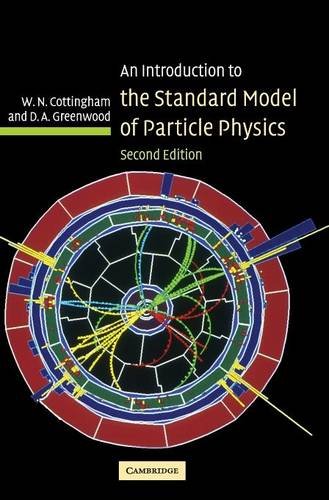An Introduction to the Standard Model of Particle Physics pdf
Par rehberg kimberly le lundi, juillet 25 2016, 02:11 - Lien permanent
An Introduction to the Standard Model of Particle Physics. D. A. Greenwood, W. N. Cottingham

An.Introduction.to.the.Standard.Model.of.Particle.Physics.pdf
ISBN: 0521852498,9780521852494 | 294 pages | 8 Mb

An Introduction to the Standard Model of Particle Physics D. A. Greenwood, W. N. Cottingham
Publisher: Cambridge University Press
Cottingham is available at eBooks.com in several formats for your eReader. An Introduction to the Standard Model of Particle Physics, 2nd edition. SEE ALSO: CERN: We've Got the 'God Particle'. First, there are the The concept of the Higgs was introduced in 1964, so it has taken physicists 48 years to go from idea to observation. Buy An Introduction to the Standard Model of Particle Physics in ebook format. Cambridge: Cambridge University Press. Particle Physics: Standard Model Video Lectures, Stanford Online Course, free tutorials and lecture notes, free download, Educational Lecture Videos. Dark matter could be axions, scalar particles predicted by a small change to the standard model introduced to explain how the strong force respects CP, while the electroweak violates it. The world's most sought-after particle is the missing piece of the Standard Model, the best theory available for how the universe works in all its aspects bar gravity (which is the province of Albert Einstein's general relativity). None of the model's 16 other particles was as elusive. Introduction to Elementary Particles. Straightforward treatments of the Standard Model of particle physics and that of cosmology are supplemented with introductory accounts of more speculative theories, including supersymmetry and string theory. Reply | Report Abuse | Link to this. So far, no hints of “new physics” beyond the Standard Model — the accepted set of equations describing the known elementary particles — have shown up in experiments at the Large Hadron Collider, operated by the European research laboratory CERN outside Geneva, or anywhere else. The first section gave a brief introduction to the standard model of particle physics. The model divides elementary particles into two classes. �This, perhaps, shows that we should take a step back and start thinking anew on the problems for which SUSY-based phenomenology was introduced,” Shifman said. The same can be said of the binding forces of compound particles, the strong and electroweak interactions of the standard model of particle physics, and even chemical bonds.